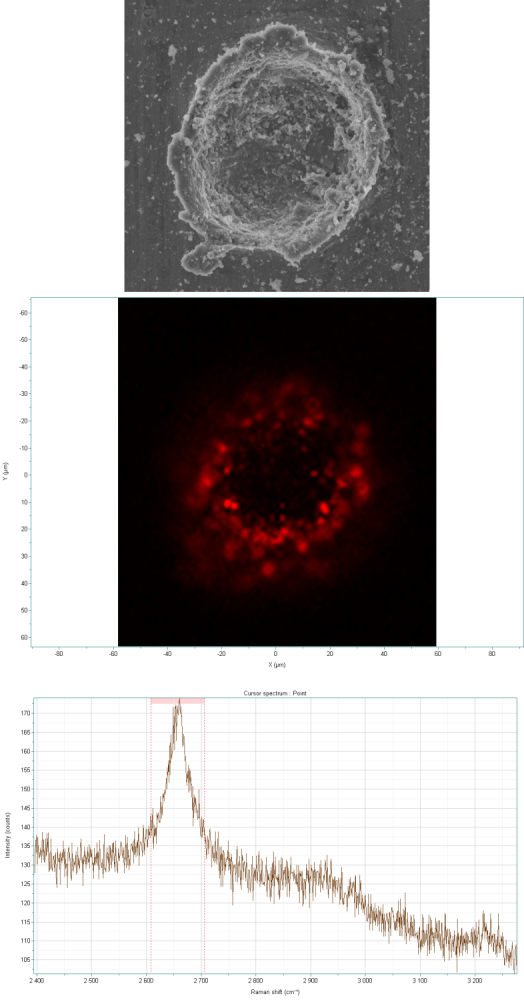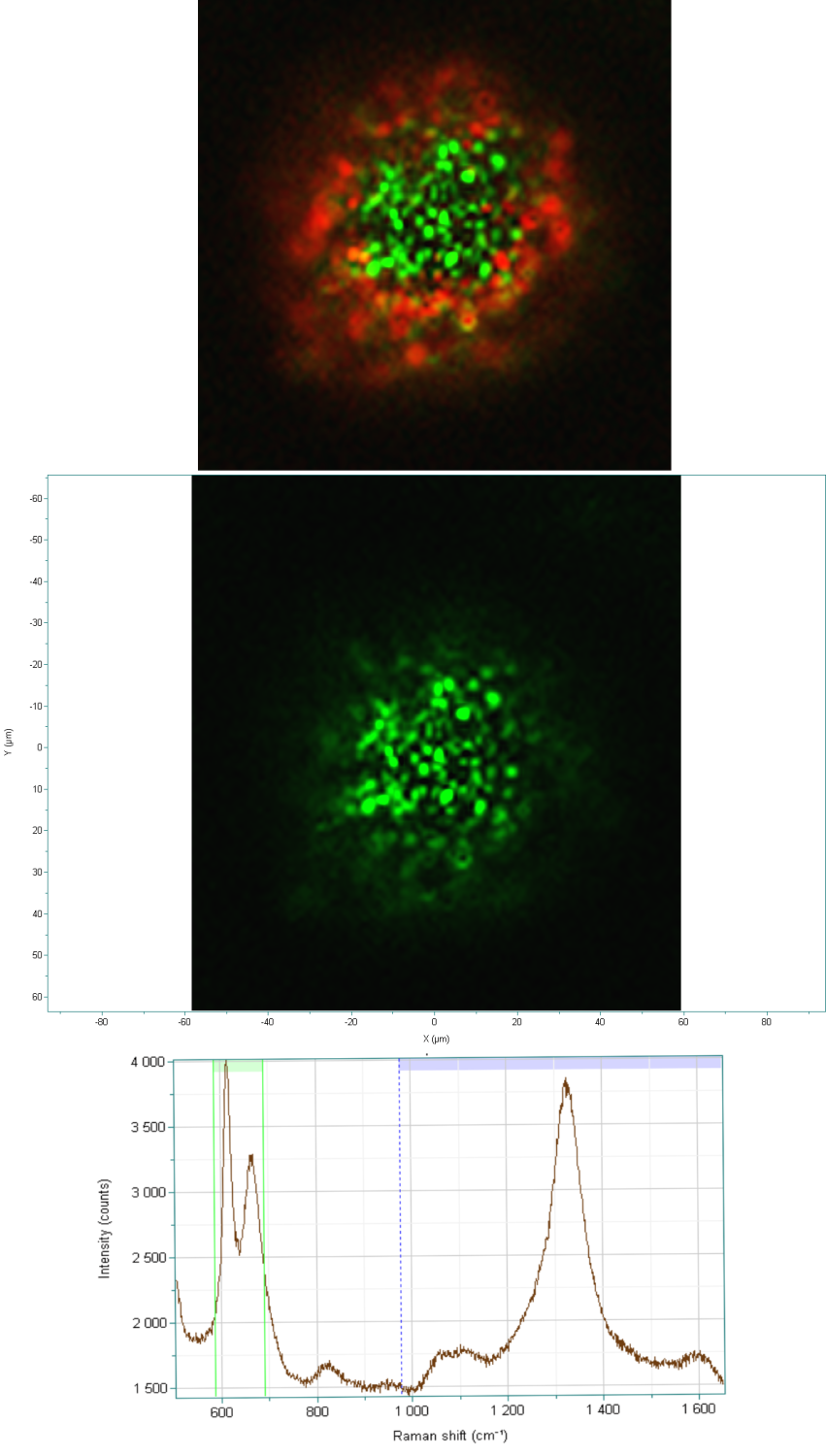Shock modification of organic compounds: investigating the effects of hypervelocity impacts of pyrene onto aluminium
- 1School of Physical Sciences, University of Kent, Canterbury, United Kingdom (v.spathis@kent.ac.uk)
- 2Space Sciences Laboratory, University of California, Berkeley, United States of America
Introduction
Hypervelocity impact phenomena are ubiquitous throughout our Solar System and, as a result of their highly energetic nature, have been responsible for a variety of both constructive and destructive events. Through the study of hypervelocity impacts we have gained unique insight into the on-going processes experienced by bodies in space, along with the effects these processes have on different materials [1]. With the number of space missions prioritizing the detection and collection of organic signatures ever-increasing, it has become necessary to consider whether collection methods can affect the composition and integrity of organic compounds [2-5]. Here, pyrene, a polycyclic aromatic hydrocarbon, was fired onto an aluminium (Al-1100) foil using a two-stage light gas gun (LGG) at 6.39 kms-1. Raman analyses of the foils suggest that the energy experienced on impact was sufficient to modify the pyrene into graphite. This demonstrates that sampling protocols need to be carefully considered as materials may, inadvertently, get corrupted in the collection process.
Materials & Methodology
The University of Kent’s two-stage LGG [6] was used to horizontally accelerate pyrene prior to impacting an aluminium foil at 6.39 kms-1. The foils were then examined using a Hitachi S-4700 cold field emission Scanning Electron Microscope (FEG-SEM), followed by Raman analyses using a Horiba LabRam HR-800 spectrometer with a 633 nm laser.
Results
The results from this experiment indicate that around the rim of the crater the pyrene has been modified into graphite (Figure 1).

Figure 1: An example crater formed as a result of pyrene hitting the aluminium foil. Top: a FEG-SEM image of the crater at 3500× magnification, 5 kV. Middle: A map showing the graphite detected around the rim of the crater (red) using Raman spectroscopy. Bottom: Example Raman spectrum of one of the red dots in the maps, showing the characteristic graphite peak at 2650 cm-1.
Additionally, the Raman data suggests that there is a different population of residues in the base of the crater that corresponds to neither pyrene nor graphite (Figure 2).

Figure 2: Raman maps of the crater showing the different residue compositions. Top: The graphite residue around the rim of the crater (red) shown with the localized residue at the base of the crater (green). Middle: The residue at the base of the crater is shown to be localized and confined within the crater floor. Bottom: Raman spectrum of the residue at the base of the crater. The peaks highlighted in green between 600-700 nm are not seen with pyrene or graphite and have not been identified, but could be the signature of an organo-metallic complex, i.e. [7].
Discussion and Conclusions
The results from this experiment show that, at 6.39 kms-1, the energy experienced during impact is sufficient to modify pyrene into graphite, presumably by breaking the bonds between the aromatic rings. Moreover, a different population of residues is observed on the crater floor with characteristic peaks between 600-700 cm-1. Although these residues are difficult to characterize, several hypotheses are posed. Firstly, it is suggested that the residues at the base of the crater could be disorganized pyrene resulting from the high pressures and temperatures experienced by the projectile on impact. Other possibilities include that a metal complex formed as a result of the reaction between the pyrene and aluminium foil, or perhaps the aluminium catalysed a reaction encouraging the (possibly partial) formation of benzene rings. This is due to the 680 cm-1 line, which also closely corresponds to one of the only strong benzene peaks. Nevertheless, the results from these experiments clearly demonstrate that organic, polycyclic aromatic hydrocarbon compounds, such as pyrene, can be inadvertently modified on collection due to impact. Therefore, it is important to constrain sampling parameters, particularly velocity and collection substrate, to ensure that precious material collected in space is done so in the least compromising way. Only that way will we be able to make accurate identifications and classifications of materials which may, one day, help us uncover the secrets of our Solar System.
Acknowledgements
The authors would like to thank the UK Sciences and Technology Facilities Council (STFC) for funding and M. C. Price for all his help and advice.
References
[1] Melosh H.J.: Impact cratering: a geologic process, Oxford University Press, 1989. [2] Mathies R.A. et al (2017) Astrobiology, Vol. 17 (9):902-912. [3] New J.S. et al (2020) MAPS, Vol. 55 (3):465-479. [4] New J.S. et al (2020) MAPS, Vol. 55 (8):1936-1948. [5] Henkel T. et al (2012) 43rd Lunar and Planetary Science Conference. [6] Burchell M.J. et al (1999) Meas. Sci. Technol., 10(41). [7] Henkel T. et al (2012) 75th Annual Meteoritic Society Meeting.
How to cite: Spathis, V. and New, J.: Shock modification of organic compounds: investigating the effects of hypervelocity impacts of pyrene onto aluminium, European Planetary Science Congress 2021, online, 13–24 Sep 2021, EPSC2021-607, https://doi.org/10.5194/epsc2021-607, 2021.

